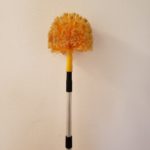No matter where you live these days you have been affected by COVID-19. Some of us can work from home, while others have been reassigned and some have not been able to work. However, as June 1st approaches many of us will be returning to our work environments with new social distancing guidelines. These guidelines also require all of us to change our behavior on how we interact but also how we will need to implement strict cleaning procedures.
So how do you maintain your IPM program and follow these guidelines?
As you and your staff regain entry into your buildings it’s important to understand that you might have a variety of pest control issues. While the humans have been away the mice, roaches, ants, bats, and myriad of other insects have had a free rein of your buildings. As staff start to enter your buildings this is a good time to reinforce how they need to report these pest findings. Making sure that staff doesn’t use their own chemical controls is still essential to ensuring your IPM program stays in compliance.
 Now is a good time to conduct those facility inspections. Finding those vulnerable areas where pests enter your buildings will aid in making sure you don’t have bigger problems in the fall when everyone comes back to school. One of the resources we developed several years ago was the IPM Calculator that allows you to conduct a full inspection on your school campuses and give them a score. Once you set up an account, you can access a PDF inspection checklist and then once you have inspected your campus, you will input that data into the system. Once everything is entered from that campus and you hit submit, our system will then calculate the risk your building has for pests. Nothing will get an administrator’s attention is when you give them a score of C, D or F on their building. Or knowing that you have buildings with high scores (A and B) so that you know which campuses need extra attention. Remember inspections are the backbone of any IPM program and can help you put into place exclusion methods to keep the pests outside.
Now is a good time to conduct those facility inspections. Finding those vulnerable areas where pests enter your buildings will aid in making sure you don’t have bigger problems in the fall when everyone comes back to school. One of the resources we developed several years ago was the IPM Calculator that allows you to conduct a full inspection on your school campuses and give them a score. Once you set up an account, you can access a PDF inspection checklist and then once you have inspected your campus, you will input that data into the system. Once everything is entered from that campus and you hit submit, our system will then calculate the risk your building has for pests. Nothing will get an administrator’s attention is when you give them a score of C, D or F on their building. Or knowing that you have buildings with high scores (A and B) so that you know which campuses need extra attention. Remember inspections are the backbone of any IPM program and can help you put into place exclusion methods to keep the pests outside.
Moving outside watch your perimeter for wasps, hornets, bees, and yellowjacket nests. Texas is home to over twenty different species, and they are largely beneficial. However, it is important to watch the eaves and soffits of your buildings to keep from nests becoming problematic. Simple steps like using a webster to knock down paper wasp and mud dauber nests are something even a custodian can do. Watching for bees and yellowjackets nests is also essential, these insects tend to build their nests in cracks and crevices in hidden areas behind large bushes. Typically, they go unnoticed for months and become a problem in September and October, so now is the time to train custodial staff to be aware of their surroundings.
species, and they are largely beneficial. However, it is important to watch the eaves and soffits of your buildings to keep from nests becoming problematic. Simple steps like using a webster to knock down paper wasp and mud dauber nests are something even a custodian can do. Watching for bees and yellowjackets nests is also essential, these insects tend to build their nests in cracks and crevices in hidden areas behind large bushes. Typically, they go unnoticed for months and become a problem in September and October, so now is the time to train custodial staff to be aware of their surroundings.
The other outdoor insect that can move indoors and thrives outdoors is ANTS! But don’t despair we have a new online course Ants 101 that can educate about the most common ants of TX and give you CEU credits as well.
Hands and Face

The blue shading it to remind you that everytime you touch a surface you are transferring germs
If you have ever attended a CEU workshop, school IPM training with AgriLife Extension or pesticide safety training with Dr. Don Renchie then you have heard him say this; “Hold out your hands, now say with me these are the nastiest things on your body.” Hands can transmit all sorts of germs, but in our pesticide safety classes we also discuss that hands can also transfer pesticide chemicals as well. One of the exercises we have used in our trainings is apply a dye that when the lights are turned off it shows how we transfer from objects to our bodies. I found this video from the BBC that uses this dye to show how coronaviruses are spread. Remember the common cold virus is a coronavirus so when you practice good hygiene you are protecting yourself and your family. The other video I found is something you can share with staff, teachers, and kids it’s on how germs spread. This is a good reminder about all the nasty things we encounter.
Finally, I would like to direct to the Texas Association of School Boards website on COVID-19. This week I participated in webinar from the Risk Management group on How Will COVID-19 Impact Summer Maintenance Work? While most of us leave this topic to administrators I highly recommend you sign up for their newsletters and check out their website as well. I have always promoted the risk manager in your district as an important part of your IPM program. Here is your reminder to go introduce yourself to that person and take a few minutes explaining your IPM program to them. They can be your biggest champion as what happens with pests can impact the entire district as well.
One last item: I am planning to host a couple of webinars in June where you will have a chance to ask our experts on insects and turf management. Keep on your eye on your email and feel free to follow me on social media the Facebook page on school IPM is where I post a lot of information that I don’t put in the newsletter. Don’t Facebook then you can find me on Twitter @JanetDHurley or Linkedin all three accounts are linked to my social media postings.
Remember we are here for you, please let me know how we can help your district as you return back to work.

 .
.